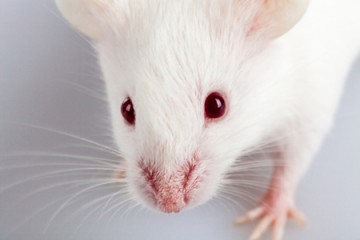New research reaffirms that sleep is essential for learning and memory function in the brain, based on findings with mice.
The study from Johns Hopkins Medicine suggests that a key purpose of sleep for mice is to recalibrate the brain neurons that help solidify lessons learned and use them the next day.
A summary of the research appears this week in the journal Science.
"Our findings solidly advance the idea that the mouse and presumably the human brain can only store so much information before it needs to recalibrate," says Graham Diering, a postdoctoral fellow at Johns Hopkins who led the study. "Without sleep and the recalibration that goes on during sleep, memories are in danger of being lost."
The researchers focused on a process—known as "homeostatic scaling down"—that has been well-studied in lab neurons but not before in living animals. This process helps prevent neurons in the brain from firing constantly and reaching their maximum load. When a neuron maxes out, it loses capacity to convey information, which stymies learning and memory.
"Homeostatic scaling down" weakens the synapses that connect neurons—but in a uniform way and by a small degree, so the relative strength of the synapses remains intact, and learning and memory formation can continue.
To see how this process works with sleeping animals, the Hopkins scientists looked for protein changes specifically in the hippocampus and the cortex of the brain. They found that sleeping mice, compared to awake mice, had a 20 percent drop in protein levels that indicate the weakened synapses typical of the scale-down process.
"That was the first evidence of homeostatic scaling down in live animals," says study lead author Richard Huganir, director of JHU's Department of Neuroscience. "It suggests that synapses are restructured throughout the mouse brain every 12 hours or so, which is quite remarkable."
In the sleeping mice, researchers also found, as they expected, significantly higher levels of a protein called "Homer1a," which is known to be critical for regulating sleep and wakefulness. Paul Worley, the neuroscientist who originally discovered and named Homer1a in 1997, also participated in this latest study.
Previous tests with lab-grown neurons had already shown Homer1a playing an important role in the scale-down process. In the new study, researchers found levels of that protein to be 250 percent higher in the synapses of sleeping mice, versus awake mice.
"We think that Homer1a is a traffic cop of sorts," says Huganir, explaining that the protein evaluates levels of certain neurotransmitters and chemicals to determine when the brain is "quiet enough to begin scaling down."
The researchers confirmed that sleep is a necessity for this scale-down process that can't be substituted. With some mice, they tested a drug that is known to prevent the scaling down, but the drug appeared to make little difference in the ways mice remembered and avoided a location that gave them a mild electric shock.
"The bottom line is that sleep is not really downtime for the brain," Diering says. "It has important work to do then, and we in the developed world are shortchanging ourselves by skipping it."
Huganir emphasizes that because this study only focused on the hippocampus and cortex, more research is needed on other parts of the brain—and throughout the body—to better understand the necessity of sleep.
The researchers also note the need to look more closely at how drugs that are known to prevent homeostatic scaling down, including benzodiazepines and other sedatives or sleep aids, interfere with learning and memory.
Read more from Hopkins MedicinePosted in Health, Science+Technology
Tagged neuroscience, sleep









